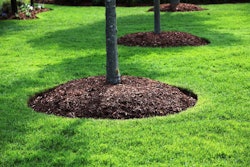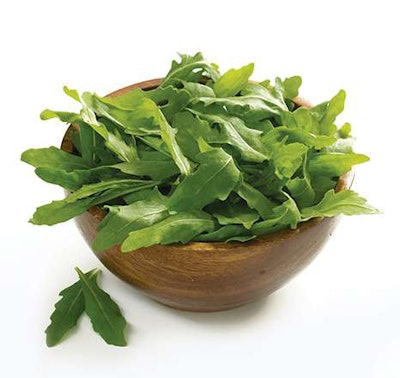
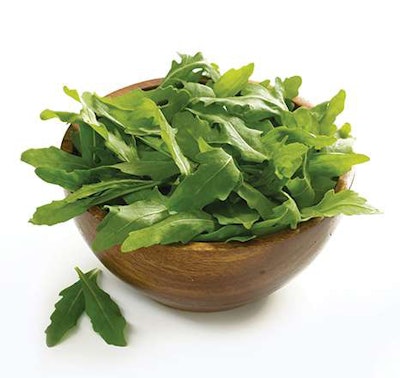
Fruits and veggies are more than just good for you: They’re good for your business.
You might not think cucumbers are cutting-edge or tomatoes are trendy, but a new movement in landscape design is evolving. Edible plants are no longer tucked away in a vegetable garden behind the garage. With the introduction in recent years of cultivars that offer improved growth habits and forms, many edibles can serve as stand-alone specimens that make attractive additions to the landscape.
Typically, new edibles are developed to be hardier and more disease-resistant than old varieties. Many are more compact, so they fit comfortably in tight spaces or in containers. In certain parts of the country, such as California and Florida, combining edibles with ornamentals is increasingly common. In fact, some municipalities request edibles be incorporated in designs when bidding on jobs.
With food-safety scares and increased awareness of the need for sustainable landscapes, there’s also more focus on eating locally.
Adding edibles doesn’t have to be an all-or-nothing approach. To whet your client’s appetite, mix edibles with ornamentals in containers or as an accent in the overall landscape.
In the commercial setting, consider adding edibles to curbside containers, restaurant gardens, and outdoor employee break areas. The hidden benefit: You set yourself apart from the competition by offering a creative, unexpected, yet practical use of space.
Consider these recently introduced edibles to spice up your landscape designs.
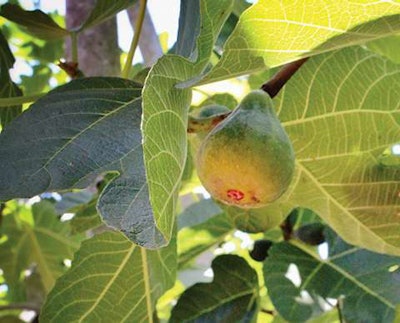 Photo: Monrovia
Photo: MonroviaCorky’s Honey Delight Fig
(Ficus carica ‘Corky’s Honey Delight’)
This fast-growing, semi-dwarf deciduous tree yields two crops of fruit per year, typically in mid-June and late summer. Figs have pretty, amber flesh with a honey flavor. Drought-tolerant once established. Performs well in coastal areas. Reaches 10 to 12 feet tall and wide.
• Hardy to USDA Zones 7 to 10
• Full sun
__________________________________________________________________________________________
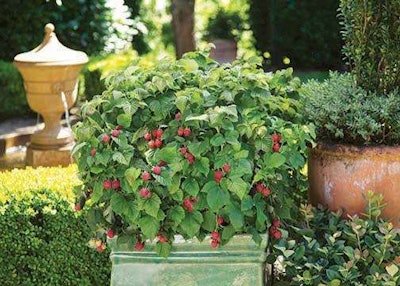 Photo: BrazelBerries
Photo: BrazelBerriesRaspberry Shortcake
(Rubus idaeus BrazelBerries ‘Raspberry Shortcake’ P.P. #22,141)
Charming, new dwarf variety has a dense, compact mounding shape. Thornless canes make berries easy to pick. Thrives in containers or in the landscape without staking. Doesn’t need a companion pollinator. Spreads 2 to 3 feet tall and wide.
• Hardy to USDA Zones 5 to 9
• Full sun
__________________________________________________________________________________________
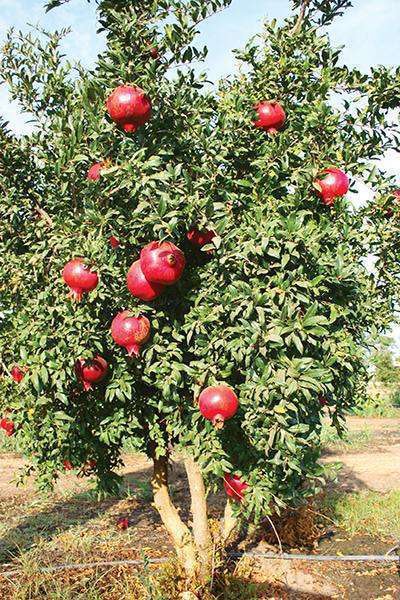 Photo: Monrovia
Photo: MonroviaAngel Red Pomegranate
(Punica granatum ‘Smith’ P.P. #16,578 Angel Red)
Eye-popping orange-red flowers, dark green foliage and bright red fruit make this an attractive landscape tree. Keep it watered to yield more fruit. Nice as a courtyard specimen. Grows 10 feet tall and wide.
• Hardy to USDA Zones 7 to 11
• Full sun
__________________________________________________________________________________________
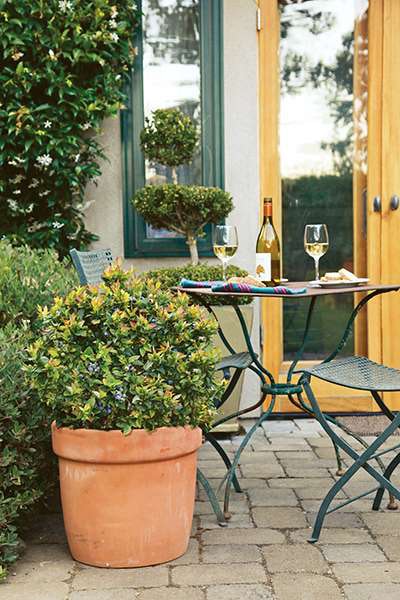 Photo: BrazelBerries
Photo: BrazelBerriesJelly Bean Blueberry
(Vaccinium corymbosum BrazelBerries ‘Jelly Bean,’ patent pending)
New compact dwarf cold-hardy blueberry yields prolific crop of fruit mid-summer. Multi-season foliage interest with bright green spring leaves, turning to dark green and red in summer with big blue berries. Red leaf edges in cooler summer climates. Does well in planters or as a mini-hedge.
• Hardy to USDA Zones 4 to 8
• Full sun
__________________________________________________________________________________________
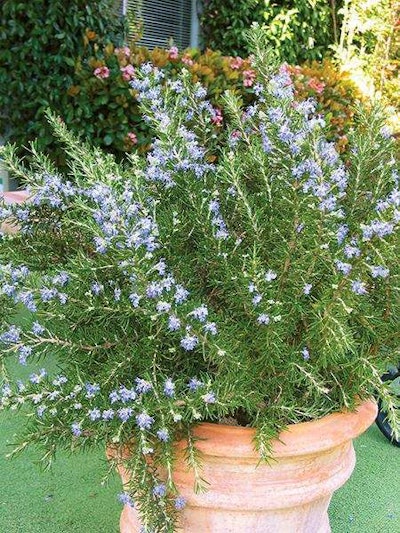 Photo: Monrovia
Photo: MonroviaRoman Beauty Rosemary
(Rosmarinus officianalis ‘Roman Beauty’ P.P. #18,192)
Dwarf evergreen shrub has arching stems with silvery undersides. Drapes nicely over rock walls or containers. Soft blue flowers. Deer-resistant. Hardy in poor soil, drought and salt spray. Grows 12 to 24 inches tall and wide.
• Hardy to USDA Zones 8 to 10
__________________________________________________________________________________________
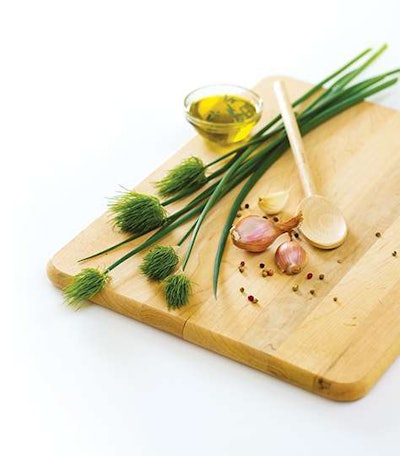 Photo: Burpee
Photo: BurpeeCha-Cha Chive
(Allium shoenoprasum ‘Cha Cha Chive’)
Instead of purple globeflowers that common chives develop, this variety grows a nifty “cap” of chives that resembles little hedgehogs. Provides textural interest. Very cold hardy. Grows 22 to 24 inches high, 12 inches wide.
__________________________________________________________________________________________
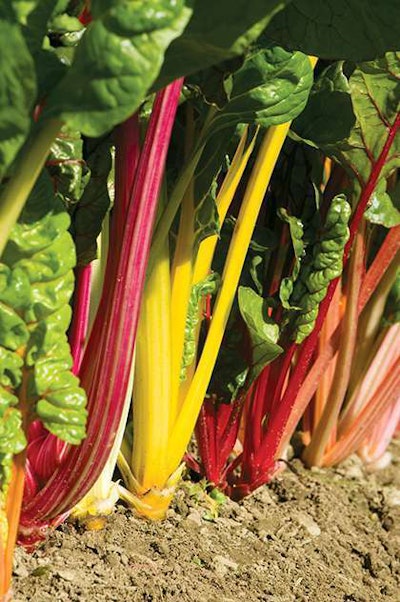 Photo: Johnny’s Seeds
Photo: Johnny’s SeedsBright Lights Swiss Chard
(Beta vulgaris, vulgaris group,‘Bright Lights’)
A prior All-America Selections winner, the rainbow stems of yellow, gold, pink, red, white, violet or striped stand out in the landscape. Can adapt to part shade. Prefers cool weather but can be planted fall to spring in hot climates. Grows 18 to 24 inches high, 6 to 12 inches wide.
__________________________________________________________________________________________
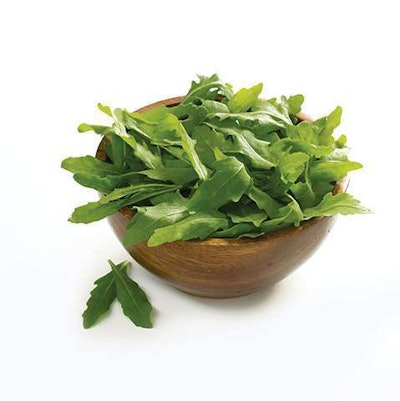 Photo: Burpee
Photo: BurpeeWildfire Arugula
(Eruca sativa ‘Wildfire’)
Spicy hot and deep green. Does well in containers. Interplant with other greens to make a salad garden or border along other plantings. Grows 5 to 6 inches tall, 6 to 7 inches wide.
__________________________________________________________________________________________
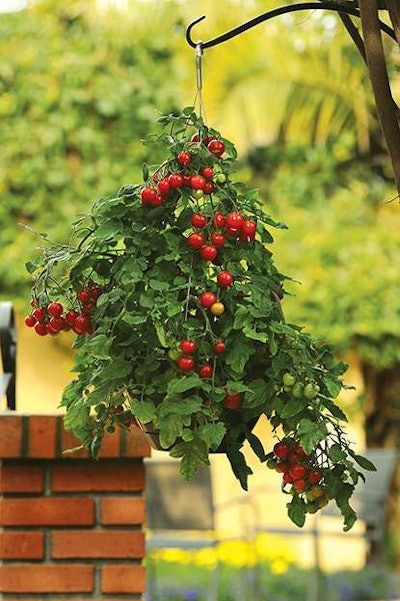 Photo: Ball Horticultural Company
Photo: Ball Horticultural CompanyTomatoes
(Solanum lycopersicum)
Mix tomatoes in containers with draping annuals. ‘Jasper,’ an All America 2013 selection, boasts super-sweet cherry fruits that resist cracking and hold on the vine well. This variety is particularly disease-resistant. Does well on an arbor or in large containers. Another introduction this year is ‘Topsy Tom,’ bred to have more flexible stems so they bend rather than crack.
__________________________________________________________________________________________
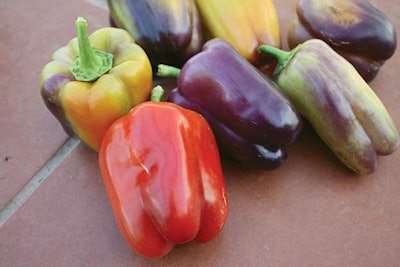 Photo: Burpee
Photo: BurpeePeppers
(Capsicum annum)
Gorgeous multi-color peppers offer season-long color impact in pots or the landscape. ‘Sweet Thing’ boasts prolific, sweet 10- to 12-inch long peppers with a hint of smokiness. ‘Pinot Noir’ is a sweet bell that’s green when young then changes to pink, orange and red, displayed simultaneously on the plant.
__________________________________________________________________________________________
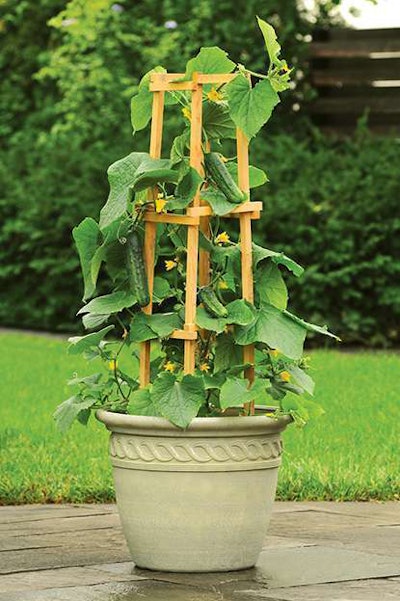 Photo: Ball Horticultural Company
Photo: Ball Horticultural CompanyCucumbers
(Capsicum annum)
New compact varieties of cucumbers work well in gardens or in containers with a small trellis. Try new ‘Patio Snacker’ in large containers so it can stretch its roots to reach 36 to 60 inches in height. Or, choose ‘Supremo Hybrid,’ which reaches 15 inches high with cukes ready to pick for snacking when just 3 to 5 inches long.
__________________________________________________________________________________________
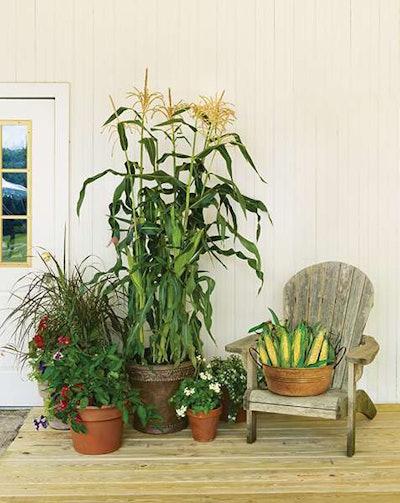 Photo: Burpee
Photo: BurpeeSweet Corn
(Zea mays ‘On Deck’)
For the first time ever, grow ‘On Deck’ hybrid sweet corn in containers on your client’s deck or patio. Provides screening, vertical interest and two to three ears of corn per stalk when planted nine seeds per 24-inch container. Let stalks dry for autumn display. Grows 4 to 5 feet tall, 12 to 18 inches wide.


